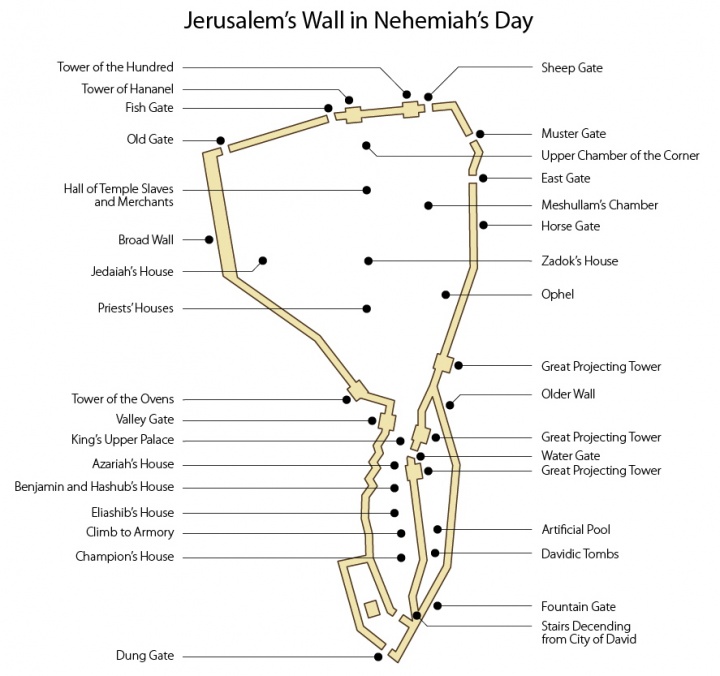Bible Commentary
Nehemiah 3
Organization of the Rebuilding Work
 UCG.org
UCG.org
The Jews immediately commence rebuilding the city wall according to Nehemiah's organization of the work. He assigns various sections to different groups—families, neighborhoods and even professional guilds. The people had to work together not only within their particular teams but also in cooperation with other teams. Note how many times the phrase "next to them" occurs in the chapter. Major building work always takes work teams cooperating together. This is true even in the spiritual work of the people of God's Church today.
There was much work to be done. The Holman Bible Atlas states: "Nehemiah 3 contains numerous references to gates and structures along Jerusalem's fortifications. Unfortunately, identifying archaeological remains with any of these structures has been difficult, yet archaeologists have provided a clearer picture of Nehemiah's Jerusalem. After the destruction of Jerusalem in 586 B.C., settlers confined themselves to the eastern ridge, the old City of David and the Temple Mount. There is no evidence of any occupation of the western ridge during the Persian era, although parts of Hezekiah's walls must have remained in fragmentary condition. Settlement upon the City of David apparently was more constricted than ever before. Much of the eastern slope perhaps was left unprotected, as a new line of defense was established farther up the slope, perhaps built along the line of a much earlier wall. Fragments of a wall built of roughly dressed limestone near the crest have been identified by some archaeologists as 'Nehemiah's Wall,' but others believe the 'wall' is actually a quarry line. A few of the domestic structures on the eastern slope were reused, but most buildings were located on the crest of the ridge.
"The fact that Nehemiah completed his initial repairs in fifty-two days [as we will see in Nehemiah 6:15] argues strongly that segments of the earlier defenses must have been still standing; presumably the western line of defense and the walls enclosing the Temple Mount were on the same lines as those prior to 586 B.C. The Valley Gate (Nehemiah 3:13), along the Tyropoeon Valley [on the west side], has tentatively been identified by some scholars with remains dating from the Iron Age. The location of other gates in Nehemiah 3 are more speculative. It seems reasonable to locate the Water Gate (Nehemiah 3:26) near the Gihon Spring [on the east side] and the Fountain Gate at the base of the southeastern hill (Nehemiah 2:14; Nehemiah 3:15). Several towers mentioned in Nehemiah 3 (the Tower of Hananel, the Tower of the Hundred) undoubtedly lay along the northern defenses where Jerusalem was most vulnerable. Jerusalem of Nehemiah's day was slightly smaller than the city of David and Solomon, perhaps covering thirty-seven to thirty-eight acres" (p. 172).
Finally, we should observe that the work in Jerusalem was done by people from all walks of life—just as it is in the Church of God today. The Expositor's Bible Commentary notes on verse 32: "We know from chapter 5 that there were deep economic differences in Judean society. With the exception of the nobles of Tekoa (v. 5), everyone pitched in, from the high priest (v. 1) to goldsmiths and perfume makers (vv. 8, 31) and even women (v. 12), to accomplish a common task. Some, like the commoners of Tekoa, even did more than their share (v. 27). What an inspiring example of what can be done when God's people work together under dynamic leadership! Viggo Olsen, who helped rebuild ten thousand houses in war-ravaged Bangladesh in 1972, derived unexpected inspiration from reading a chapter ordinarily considered one of the least interesting in the Bible: 'I was struck...that no expert builders were listed in the "Holy Land brigade." There were priests, priests' helpers, goldsmiths, perfume makers, and women, but no expert builders or carpenters were named.'"
